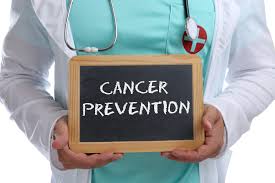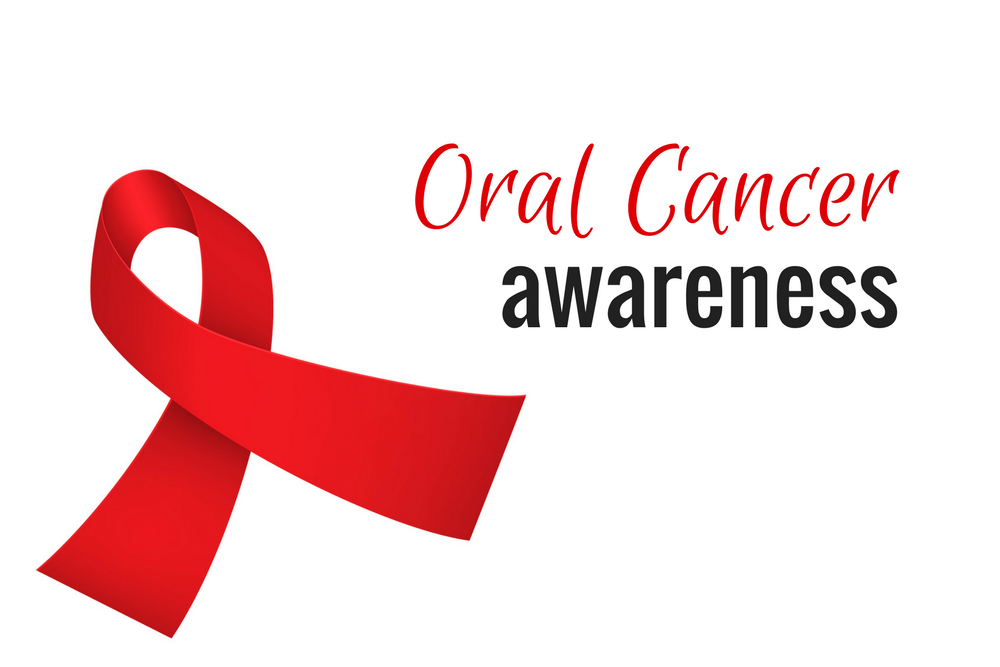The Dental Health Society strongly encourages dental checkups every six months as part of a successful oral health care plan. In addition to keeping teeth clean and healthy, these visits play an even more important role. You may not realize it, but part of a dentist’s typical exam includes checking for signs of oral cancer.
April is National Oral Cancer Awareness Month. The annual event was conceived by the Oral Cancer Foundation to raise awareness of oral and oropharyngeal cancers. (Oropharyngeal refers to the back of the mouth and base of the tongue.)
In addition, the week of April 7-14 is designated Oral, Head, and Neck Cancer Awareness Week. This initiative is led by the Head and Neck Cancer Alliance and supported by the American Academy of Otolaryngology-Head and Neck Surgery.
Oral cancer is the most common subcategory of cancers of the head and neck. It encompasses cancers of the mouth, tongue, tonsils, and throat.
Is Oral Cancer Dangerous?
Oral cancer may not be talked about as much as other cancers, but it is actually quite common—and quite serious. The Oral Cancer Foundation estimates that 53,000 new cases will be diagnosed in the United States this year. When found in its early stages, patients have an 80-90% survival rate. Unfortunately, a lack of public awareness often leads to late discovery. The foundation’s statistics show that one person dies every hour of every day from these types of cancers.
Like most cancers, oral cancer is treated in a number of ways. Surgery, radiation, chemotherapy, and targeted drug therapy may be used or combined depending on the location and severity of the cancer.
Surgery for oral cancer can be life-altering, as parts of the tongue or jaw bone may need to be removed. Reconstructive surgery and dentistry can aid patients in talking and eating, as well as restoring their facial structure.
Early Signs of Oral Cancer
Because oral cancer can be deadly, it’s important to know what to look for. Dentists, dental hygienists, and periodontists play a pivotal role in recognizing the early stages of the disease. Because dental professionals spend their days looking at people’s mouths, they are often the first ones to notice when something is wrong.
Dentists are trained to examine the mouth during an exam for anything that looks abnormal. Many oral cancers will start as a small red or white patch on the tongue, lip, gum, or inside the cheek.
Other symptoms might include:

- mouth sores that don’t heal
- swelling or thickening of mouth tissue
- loose teeth
- pain in the jaw, tongue, neck or ear
- sore throat or pain when swallowing
- the feeling of something stuck in the throat
Dentists will typically ask patients if there are any changes or issues with their teeth and mouths. This is the time to bring up symptoms like these. If these conditions have persisted for more than a few weeks, the dentist may recommend a doctor’s visit for further testing.
Additional testing might include a biopsy, endoscopy, or imaging such as a CT scan or MRI. If cancer is detected, an appropriate treatment plan can be mapped out.
Oral Cancer Screening at Home
Dentists are trained to spot oral cancer and the majority of them include visual screening in their exam procedures. But there is no official national screening policy or protocol in place. This is one of the goals behind National Oral Cancer Awareness Month. But until their are regular screenings in place, it is important that patients are aware and vigilant about their own oral health.
Patients should talk to their dentists about checking for signs of oral cancer. Many times it is part of the exam without the patient realizing it. They can also do self-exams at home. Being observant about any changes in the mouth, and discussing those changes with a dentist are a patient’s first line of defense.
The Oral Cancer Foundation has created CheckYourMouth.org. This site gives specific instructions on how to do a self-exam and exactly what to look for.
Oral Cancer Causes
Studies compiled by the Oral Cancer Foundation site tobacco and alcohol use as the most common contributors to oral cancer. Research also indicates a connection to the human papilloma virus (HPV) which is also a cause of cervical cancer in women. These three factors, tobacco, alcohol, and HPV, account for about 90% or oral cancer cases. The remaining 10% have no identifiable cause.
Other things that are thought to be risk factors are excessive sun exposure, exposure to radiation or chemicals such as asbestos and formaldehyde, and a weakened immune system.
Dentists On the Front Lines in Fighting Oral Cancer
With a dentist’s help, you have a better chance of finding and fighting oral cancer. Some things you can do to improve your odds:
- Cut back on tobacco use, or better yet, quit entirely.
- Drink only in moderation.
- Be aware of health issues such as HPV.
- Do self-exams to notice any changes in your mouth.
- Have routine dental checkups that include cancer screening.
- Talk to your dentist about your concerns.
Making an appointment with your dentist is a great way to observe National Oral Cancer Awareness Month. If you need to find a dentist, use our online tool to find one near you.


